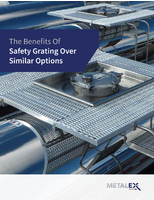Servo-Insert Couplings have vibration dampening design.
Share:
Press Release Summary:

Used in applications with vibrations and crushes, servo-insert couplings exhibit dampening attributes caused by spider element, available in different shore hardnesses, positioned between 2 hubs. Pluggable design facilitates accelerated assembly, and hub styles include shaft fixing with set screws, clamp hubs, or outer conical hubs. Offered with torque ranges from 1.2-940 Nm, non-wearing and maintenance-free couplings are resistant to environmental influences and temperatures.
Original Press Release:
Ondrives New Servo-Insert Couplings
Specialist mechanical components supplier, Ondrives Ltd of Chesterfield, England have recently introduced a high quality range of servo-insert couplings into their extensive coupling range via their biggest ever catalogue, now that they have merged with sister company, Rino Industries Ltd.
Typically, they are used in applications where vibrations and crushes may appear. The dampening attributes of those couplings are caused by the spider element which is positioned between the two hubs. This spider element is available in different shore hardnesses. Depending on the requirements it is recommended customers use a spider element with low dampening properties for applications with low vibrations and crushes (higher torsional stiffness of the coupling) and to use a spider element with high dampening properties for application of high grades of vibrations or crushes (lower torsional stiffness of the coupling).
A further positive property of the servo insert couplings is that they are pluggable, so they can be assembled quickly and easily even under difficult assembly conditions. The many different varieties of the hub style include shaft fixing with set screws, with clamp hubs and with outer conical hubs. Customers will find that the most popular type, as always, is with the clamping hubs as they ensure the fastest assembly/disassembly without leaving marks on the shafts. Torque range varies from as low as 1.2Nm up to 940Nm on the largest sizes. Other advantages include an extremely compact design and minimum mass and inertia as standard. They offer high resistance against environmental influences and temperatures as well as being non-wearing and therefore maintenance free.
A misalignment of the shafts in axial, lateral and angular directions can be compensated by a servo insert coupling as well but it should only be a minimum of misalignment because relatively high reset forces are caused by the coupling which do negatively influence the lifetime of components such as bearings in this environment, the company states.
Typical applications include -
Stepping motors, servo drives, machine tools, CNC machines, wood working and packaging machines, factory automation machinery, printing machines, sheet metal forming machines, industrial robots, textile machines and control and feedback control systems.




